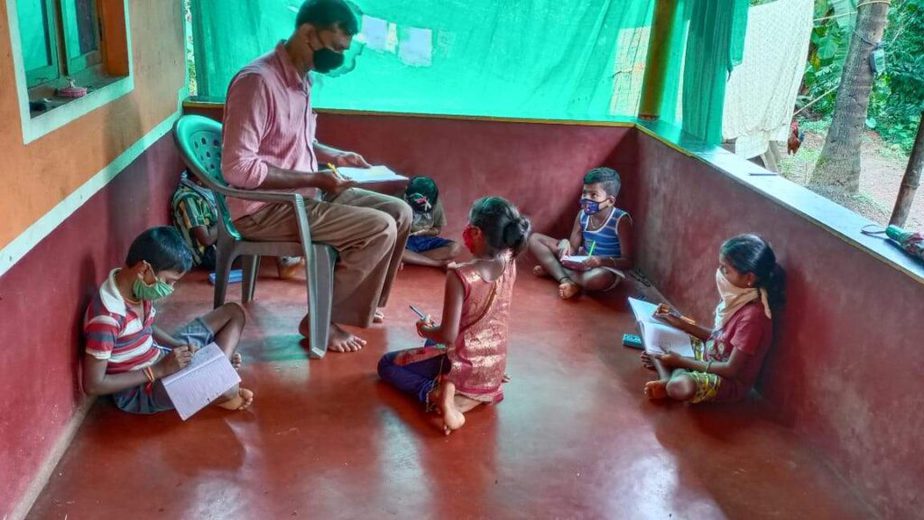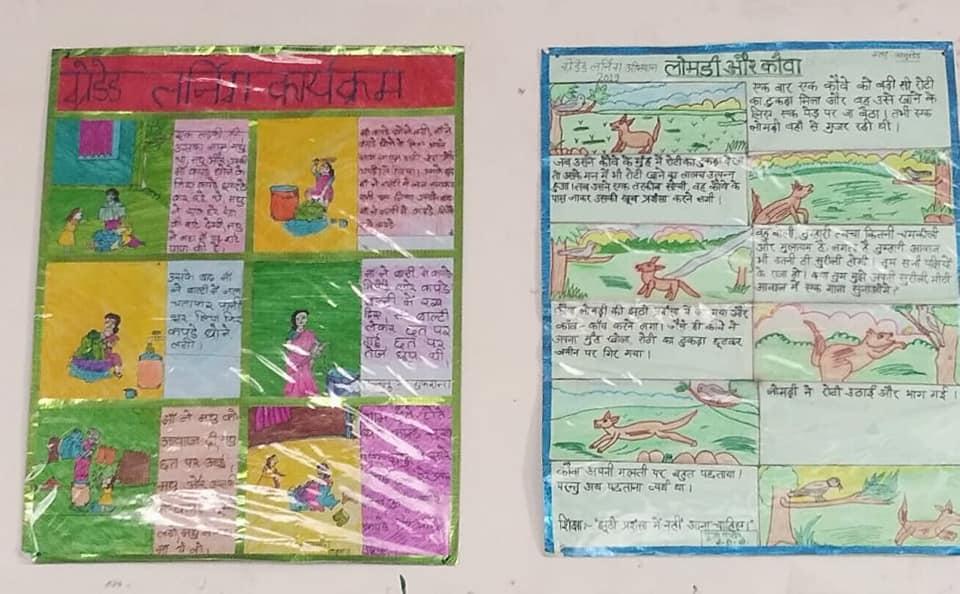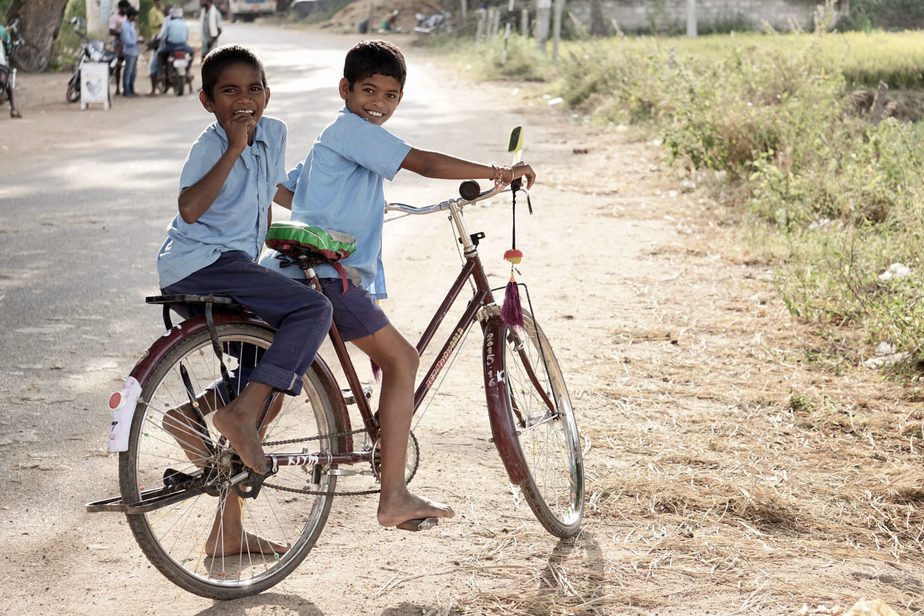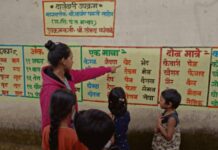Schools and other educational institutions have been given conditional permission to resume physical classes as per the recent order of the Ministry of Home Affairs. The order marks the end of a strict six-month-long ban on physical schooling. But, can schools simply pick up from where they left off?
The shift to online education during the lockdown period has deepened a pre-existing education divide. The widespread inaccessibility of technology and the internet made it difficult for a large number of underprivileged and marginalized students to access online education when offered. Socio-economic factors like caste, class, gender, and (dis)ability further magnified the problem of (in)access. A child’s right to a quality education guaranteed under the Right To Education Act, 2010 is now in a state of limbo.
Globally, the closure of schools is expected to increase the number of lower secondary-aged children below their minimum-level grade proficiency by 25%.
Even before the pandemic, the Annual Status of Education Report (ASER) and National Assessment Survey (NAS) reflected a grim picture of the state of learning across schools in India. To add to this, long breaks in the continuum of education caused by natural disasters—such as the magnitude-7.6 earthquake that hit Northern Pakistan in 2005—are known to result in learning losses.
40% of 14-18 year olds in India cannot read time #ASER2017. Question is why haven’t we woken up 13 years after the first ASER report? https://t.co/e1MPaaVeR2
— Anustup Nayak (@anustup_nayak) January 16, 2018
With poor learning levels and a prolonged break in the education continuum coupled together, one can expect that children will return to schools with significant learning losses. The World Bank estimates that a five-month closure of schools can generate a learning loss large enough to balloon into a long term impact on a child’s employability—potentially leading to a lifetime loss in earnings of about $10 trillion (USD) for 1.6 billion students worldwide. Another estimate connects the loss of learning and skills during this period to an “average of 1.5 percent lower annual GDP for the remainder of the century” for countries across the globe.
The need of the hour is to devise a deliberate action plan consisting of structured academic and emotional support to mitigate the learning losses and buoy-up on learning levels in the country. To do this, it is essential to see whether India’s education policies of late accommodate for such a response.
India’s Education Policies: The Story So Far
The Right to Education Act, 2010 provides for free and compulsory primary education for all children between the ages of 6 to 14.
However, the focus of Indian education policies so far have been on quantitative aspects of enumerating the state of infrastructure or enrolments, rather than qualitative aspects such as learning outcomes or knowledge retention. The RTE and various state education laws prescribe factors such as school buildings and infrastructure, access to socially and economically disadvantaged sections, library books, and the number of teachers as the basis for school recognition and affiliation to specific Boards. The Unified District Information System for Education (UDISE) further captures 114 data points on the functioning of schools, of which only two points are reflective of qualitative aspects — examination results from grades 5 and 8.
This focus, however, is slowly shifting. India’s various education policies—especially the National Education Policy 2020— now lay down a clear focus on qualitative improvements in the education system and not simply on infrastructure development and what curriculum is being taught.
The question then is, keeping in mind these education frameworks and ethoses, how can we recommit to the right to quality education in the aftermath of the pandemic?
There are four steps that may be taken to reinforce quality primary education after being hit by the COVID-19 pandemic.
Step 1: Individual Assessments/Tests for Learning Loss
India lacks a regular national-level mechanism for gauging the individual learning gains of students. While the NAS (conducted by the NCERT) and ASER (published by Pratham) are exceptionally valuable, they are only survey-based assessments.
A census-based learning assessment, on the other hand, provides a standardised diagnostic test according to which each student’s learnings can be assessed. Such a collective, unified, and organized effort can help understand and quantify the actual learning losses as a result of the pandemic. This is the first step to be taken while designing a post-COVID-19 education. Individual student assessment tests can be introduced in all grades throughout the country on a mandatory basis. Based on the results, interventions can be tailor-made to suit the learning requirements of different groups of students.

Such individualized learning assessments can be observed in education interventions during the pandemic, such as those regularly executed by Teach for India (TFI) in its teaching model. For impact measurement, TFI conducts bi-annual standardized assessments to measure progress in students’ reading comprehension and mathematics skills. It also uses standardized rubrics to measure personal and non-academic growth. Similarly, under the Vidyagama initiative launched by the Karnataka government (currently temporarily stopped due to COVID-19 cases), mentors and teachers visited the homes of children who did not have the technology required to attend online classes during the pandemic. They conducted periodic assessments to observe their learning progress, facilitating in-person education, and assisting students if needed.
Similar learning assessments need to be established throughout the country on a regular basis without leaving any child behind. Towards this, the National Council of Educational Research and Training (NCERT) along with the State Councils of Educational Research and Training (SCERTs) must devise individual learning assessment programs to assess students’ learning across all public and private schools.
Such learning assessments not only benefit students, but educators as well—providing them with an increased understanding of the effectiveness of different pedagogies and online teaching and allowing for more robust teacher assessments. Permanently integrating this procedure in schools would provide great impetus in improving the learning outcomes of India’s future education system.
Step 2: Mandatory Re-education Periods
Based on the preliminary assessments, children with significant learning losses should enter mandatory re-education periods with specifically designed modules to cater to their needs. These periods should ideally prioritize adapting the syllabus to provide students across all grades with more time to develop fluency in the foundational knowledge and skills that they currently struggle with.
Such focused teaching can produce impressive results during short periods of time. This is evidenced by a foundational learning improvement intervention called the Graded Learning Programme (GLP), conducted by Pratham in collaboration with the Uttar Pradesh Basic Education department in 2018-19.

The project’s focused interventions to develop foundational skills in literacy and numeracy among students for a three-month period showed results similar to the learning gains typically accrued over a year’s teaching. The GLP achieved this by using the ‘teaching-at-the-right-level’ instructional approach where students are taught based on their individual learning level, as opposed to their age or grade. If executed through efficient teaching methods, balanced student-teacher ratios, and supplemented by technology-based solutions, such measures if scaled, can go a long way in curtailing the effects of the prolonged break.
In response to the pandemic, the Ministry of Education’s recent SOP (released in October) recognizes the need to alter the academic calendar, rationalize the curriculum, change pedagogical methods, and assessment procedures. It makes several well-founded suggestions to bridge learning losses and continue education in the post-pandemic scenario. However, it leaves it to state agencies to adopt and adapt them by issuing their own SOPs/guidelines, to be adhered to at the district and school level. States are left with a mere advisory in this regard.
The Samagra Shiksha Abhiyan (2018) provides scope for implementation of this SOP, as it envisages a central, single, and unified administrative structure for the education system. This allows for harmonious policy implementation, while simultaneously providing flexibility to states to adopt policies. However, education is a concurrent subject which puts the onus of implementation on the state education departments, irrespective of thorough advisories from the Centre.
Unless followed up with concrete suggestive steps for implementation, this SOP could add to the list of well-framed, idealist policies with only a half-formed practical conversion plan in place.
If applied on a permanent basis, mandatory re-education periods and/or bridge schools may help reduce the gaps in learning levels due to persistent socio-economic differences. The measure needs sincere consideration not just at an ideational level but for execution as well.
Step 3: Teacher Training and Sensitization
The in-service training of public school teachers and budget private schools must be prioritized with the aim of sensitizing them to accept the possibility of drastic learning losses and a lack of interest in education.
You May Also Like: Whither the Teaching Profession? Inspecting Some Silences in the NEP 2020
State Councils of Educational Research and Training, with the support of the District Institute for Education & Training (DIETs), must focus their attention on building empathy and raising awareness among teachers to accept the ongoing challenges in education and learning.
Step 4: Supplementary Peer-tutoring
Another mechanism to assist in the mitigation of the learning loss which took place during the lockdown is through peer tutoring. Apart from additional tutoring support, peer tutorship has shown positive results by motivating students to make the learning process more engaging, as noticed through increased participation in the classroom. A study conducted in Assam on supplementary peer-teaching points to similar benefits and suggests that peer-tutoring can help to reduce feelings of alienation among children.
A great example of formalized peer-learning is seen in Nali Kali, a learning program launched by the Karnataka state government in 1995 in collaboration with UNICEF. Centred around learning at one’s own pace, the program also encourages peer-to-peer instruction, which has helped improve learning outcomes and leadership skills.
Devoting a period of time each week for structured peer-tutoring, similar to the above-mentioned initiatives, can further help in the social and academic performances of the student tutors and their classmates.
Actions Speak Louder Than Words
If ignored, the pandemic-induced learning loss is also likely to increase the dependence of illiterate parents on private tuitions. Those who can’t afford supplementary private tutoring are likely to fall further back on their academics, lose out on opportunities, and fall into poverty traps. For those who can afford them, private tuitions threaten to burden the child, eating away at the little residual time that children have to relax.
You May Also Like: The Parent Trap: The Troubles of Teaching Children at Home During a Pandemic
The COVID-19 pandemic provides a unique opportunity for civil society to request increased accountability from the government—wherein it translates policies to well-budgeted and impactful programs. Now, more than ever, direct and well-crafted actions, rather than utopian policies must be immediately taken by the government to bridge the learning gaps brought about by the pandemic.
Featured image courtesy of Chelsea Aaron on Unsplash. | Views expressed are personal.







[…] through the direct route. Even philanthropic initiatives in ed-tech have been emerging to reduce learning losses that occurred due to school shut-downs during the pandemic.Though ed-tech has the potential to make learning accessible and act as a bridge to classroom […]
[…] through the direct route. Even philanthropic initiatives in ed-tech have been emerging to reduce learning losses that occurred due to school shut-downs during the pandemic.Though ed-tech has the potential to make learning accessible and act as a bridge to classroom […]
[…] In June, online ed-tech platform Physics Wallah became the latest entry to India’s ed-tech unicorn club; with this, India now has seven ed-tech unicorns. Since education is a strategic priority, India allows hundred per cent foreign direct investment in the sector through the direct route. Even philanthropic initiatives in ed-tech have been emerging to reduce learning losses that occurred due to school shut-downs during the pandemic. […]
[…] In June, online ed-tech platform Physics Wallah became the latest entry to India’s ed-tech unicorn club; with this, India now has seven ed-tech unicorns. Since education is a strategic priority, India allows hundred per cent foreign direct investment in the sector through the direct route. Even philanthropic initiatives in ed-tech have been emerging to reduce learning losses that occurred due to school shut-downs during the pandemic. […]
[…] In June, online ed-tech platform Physics Wallah has become the latest entry in India’s ed-tech unicorn club; with that, India now has seven ed-tech unicorns. Education being a strategic priority, India allows 100% foreign direct investment in the area by direct route. Same philanthropic initiatives in ed-tech emerged to reduce learning losses that have occurred due to school closures during the pandemic. […]
[…] in learning and learning losses have been established as a significant outcome of the break in the continuum of education. In […]